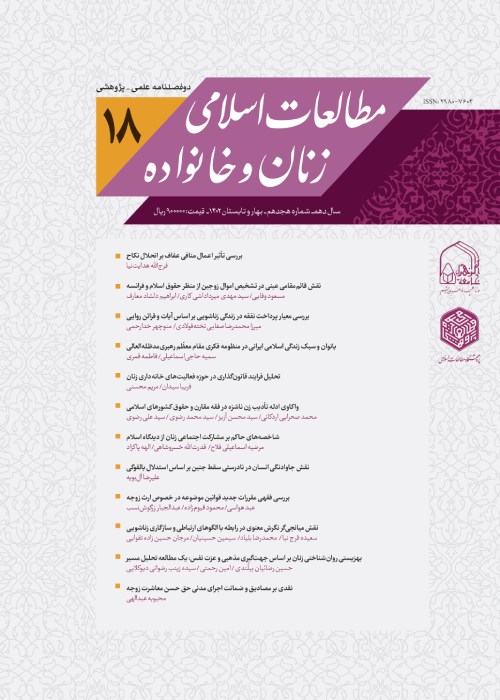Discourse Analysis of the Issue of Hijab based on Pedam Method in the Press of Constitutional Era (With an Emphasis on Iranshahr Journal)
Following the onset of the modernization process in Iran during Qajar era and its rise during the Constitutional movement, unprecedented contents emerged in the press of that time covering the issue of hijab. At that era, addressing and protesting the issue of Iranian women’s hijab was a dilemma that remarkably aggravated social and political realms. Nevertheless, the new literature that brought about the change in the status of Iranian women gradually penetrated into this realm. Applying Pedam’s discourse analysis method in five levels of analysis, this article examines some texts related to the issue of women published in the press of Constitutional era from the "superficial" to the "deeper" levels. Furthermore, while there is a lack of research on this issue as well as the the limited efficacy of historical methods, by explaining the reasons and motivations, the role of the cultural, political, and social conditions of that era, this article illuminates their impact on the issue of hijab and its emergence and advancement in that time. On the one hand, women and intellectuals education in European schools, accepting European cultural leadership, the need for progress and modernization of Iran, and on the other hand the profound absorption of Iranian women in traditional and old beliefs alongside the strong patriarchy of Iranian society, played a key role in taking stand on the progress and improvement of the women of that time. By examining the contents of Iranshahr Magazine, which due to its publication outside Iran, was less restricted in expressing its thoughts, it is clarified that the parallel social demands of that era, such as the right to education, equality in women’s rights and their social freedom, alongside critical literature attacking the culture and tradition of Iranian males and females, contrasting the culture and tradition of Iranian women with European women, undermining cultural institutions such as training, housekeeping within Iranian-style, indeed, represented a kind of preparing, ironic, and alternative literature for discussing sensitive religious and social issues, such as hijab.
- حق عضویت دریافتی صرف حمایت از نشریات عضو و نگهداری، تکمیل و توسعه مگیران میشود.
- پرداخت حق اشتراک و دانلود مقالات اجازه بازنشر آن در سایر رسانههای چاپی و دیجیتال را به کاربر نمیدهد.


